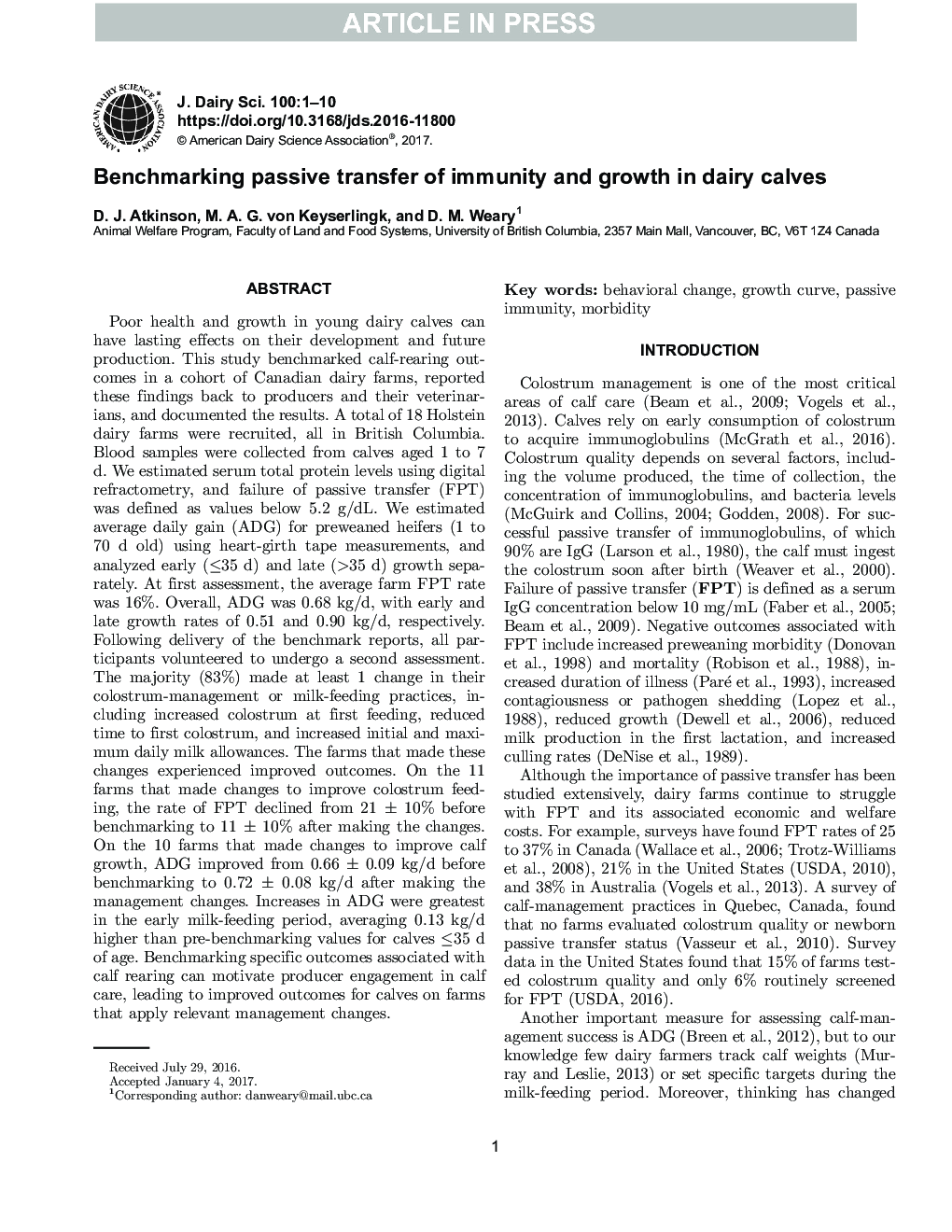| کد مقاله | کد نشریه | سال انتشار | مقاله انگلیسی | نسخه تمام متن |
|---|---|---|---|---|
| 5542173 | 1402515 | 2017 | 10 صفحه PDF | دانلود رایگان |
عنوان انگلیسی مقاله ISI
Benchmarking passive transfer of immunity and growth in dairy calves
ترجمه فارسی عنوان
ارزیابی انتقال غیرفعال مصونیت و رشد گوساله های شیری
دانلود مقاله + سفارش ترجمه
دانلود مقاله ISI انگلیسی
رایگان برای ایرانیان
کلمات کلیدی
تغییر رفتاری، منحنی رشد، ایمنی منفعل، عوارض جانبی
موضوعات مرتبط
علوم زیستی و بیوفناوری
علوم کشاورزی و بیولوژیک
علوم دامی و جانورشناسی
چکیده انگلیسی
Poor health and growth in young dairy calves can have lasting effects on their development and future production. This study benchmarked calf-rearing outcomes in a cohort of Canadian dairy farms, reported these findings back to producers and their veterinarians, and documented the results. A total of 18 Holstein dairy farms were recruited, all in British Columbia. Blood samples were collected from calves aged 1 to 7 d. We estimated serum total protein levels using digital refractometry, and failure of passive transfer (FPT) was defined as values below 5.2 g/dL. We estimated average daily gain (ADG) for preweaned heifers (1 to 70 d old) using heart-girth tape measurements, and analyzed early (â¤35 d) and late (>35 d) growth separately. At first assessment, the average farm FPT rate was 16%. Overall, ADG was 0.68 kg/d, with early and late growth rates of 0.51 and 0.90 kg/d, respectively. Following delivery of the benchmark reports, all participants volunteered to undergo a second assessment. The majority (83%) made at least 1 change in their colostrum-management or milk-feeding practices, including increased colostrum at first feeding, reduced time to first colostrum, and increased initial and maximum daily milk allowances. The farms that made these changes experienced improved outcomes. On the 11 farms that made changes to improve colostrum feeding, the rate of FPT declined from 21 ± 10% before benchmarking to 11 ± 10% after making the changes. On the 10 farms that made changes to improve calf growth, ADG improved from 0.66 ± 0.09 kg/d before benchmarking to 0.72 ± 0.08 kg/d after making the management changes. Increases in ADG were greatest in the early milk-feeding period, averaging 0.13 kg/d higher than pre-benchmarking values for calves â¤35 d of age. Benchmarking specific outcomes associated with calf rearing can motivate producer engagement in calf care, leading to improved outcomes for calves on farms that apply relevant management changes.
ناشر
Database: Elsevier - ScienceDirect (ساینس دایرکت)
Journal: Journal of Dairy Science - Volume 100, Issue 5, May 2017, Pages 3773-3782
Journal: Journal of Dairy Science - Volume 100, Issue 5, May 2017, Pages 3773-3782
نویسندگان
D.J. Atkinson, M.A.G. von Keyserlingk, D.M. Weary,
